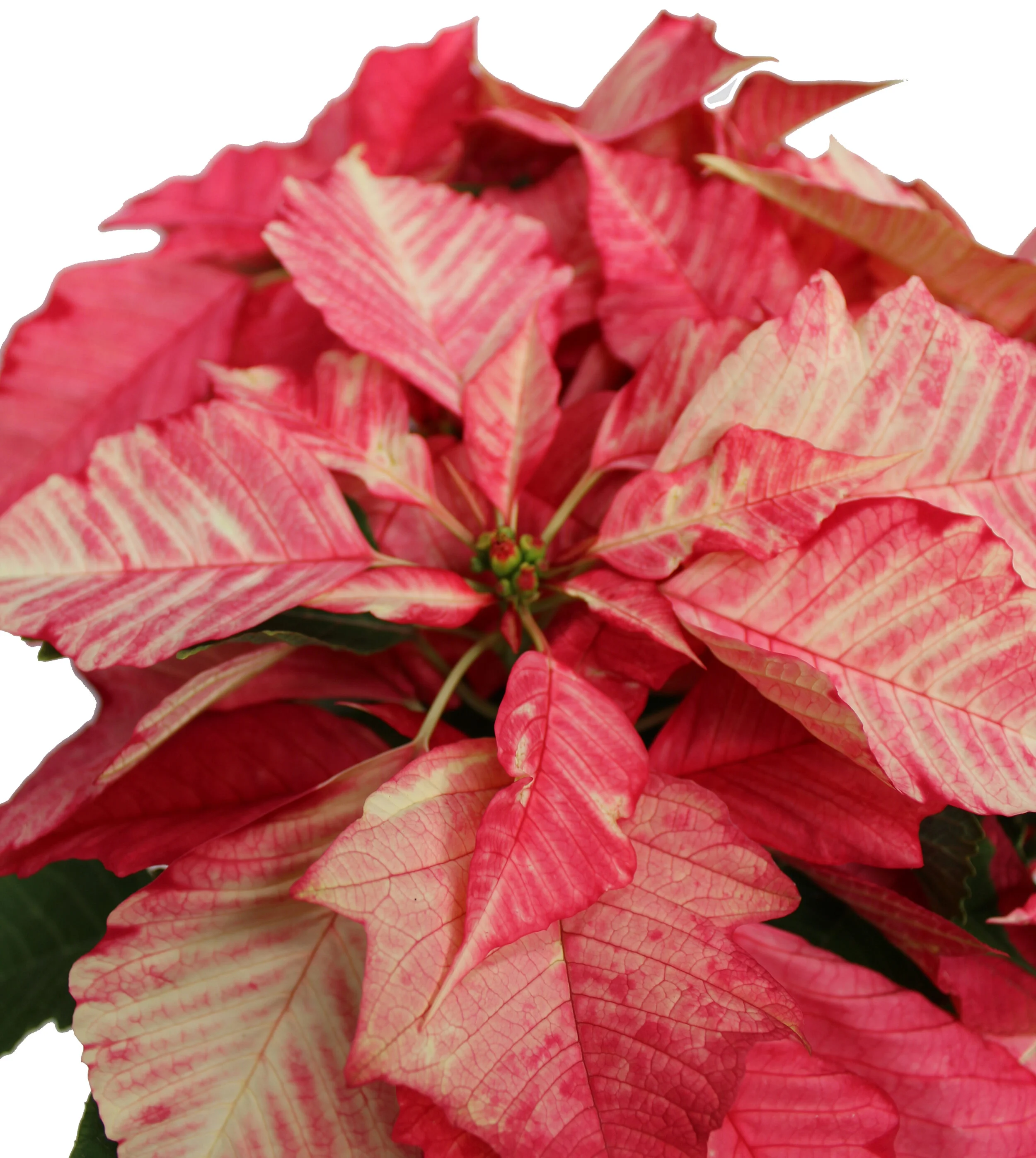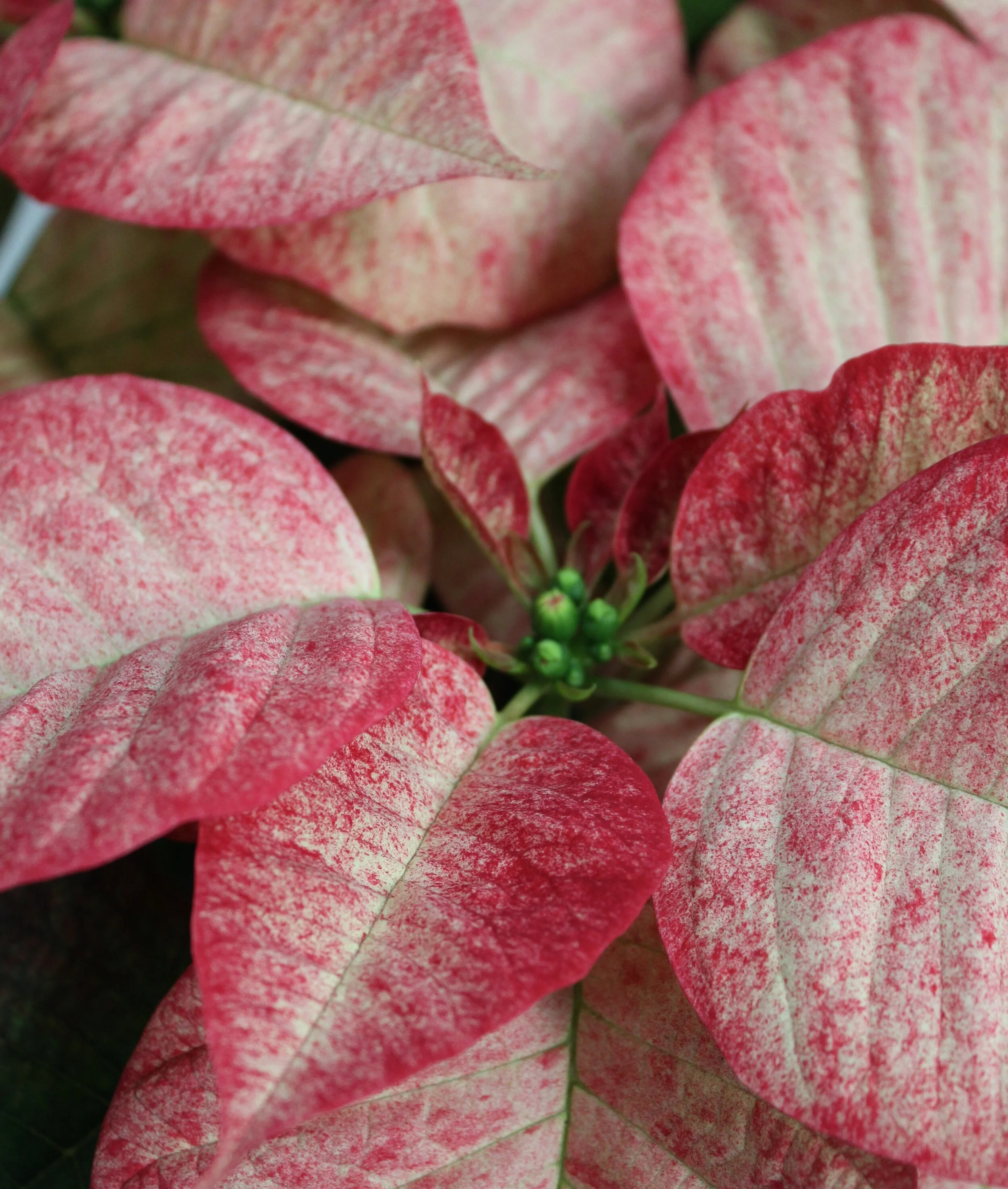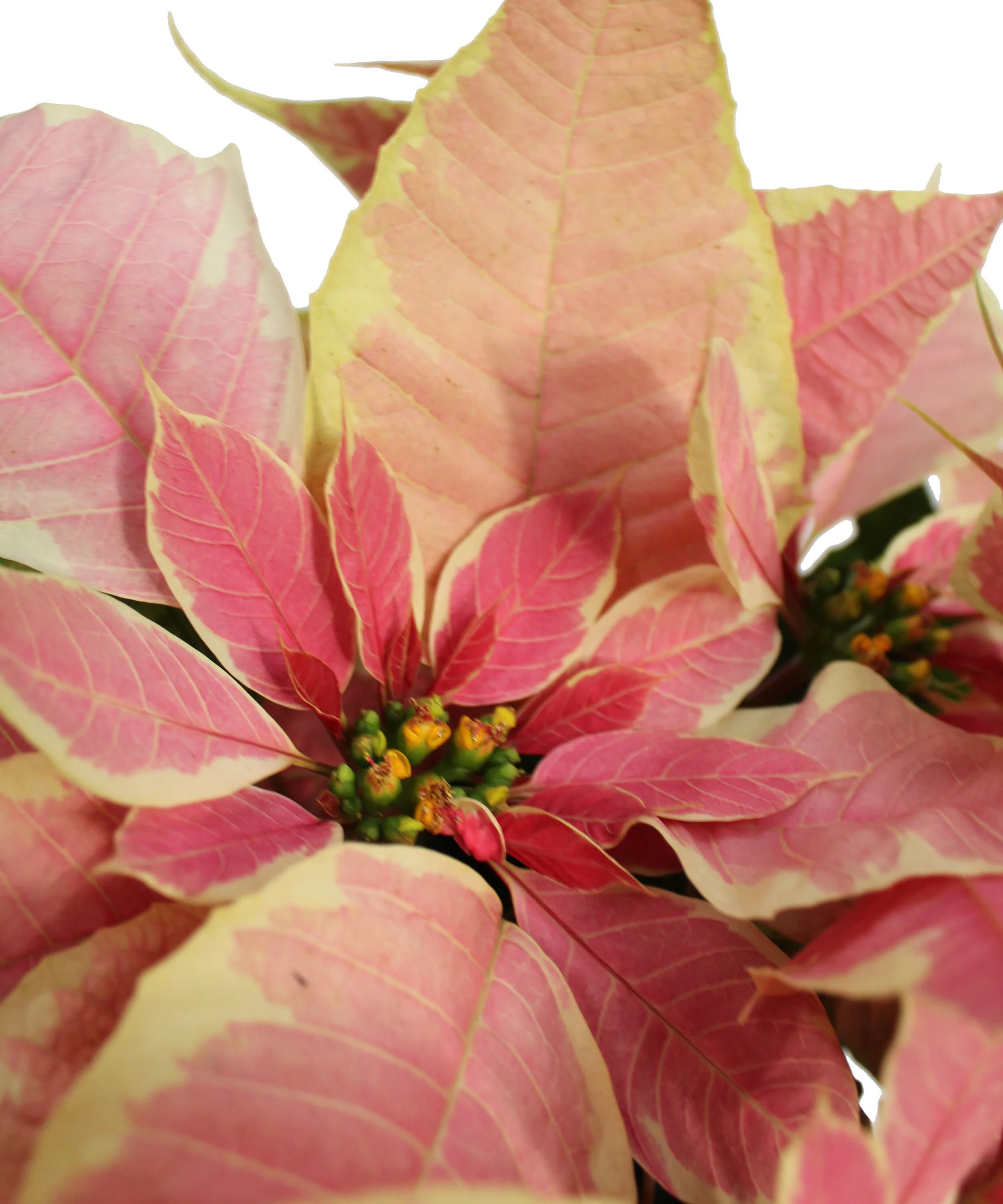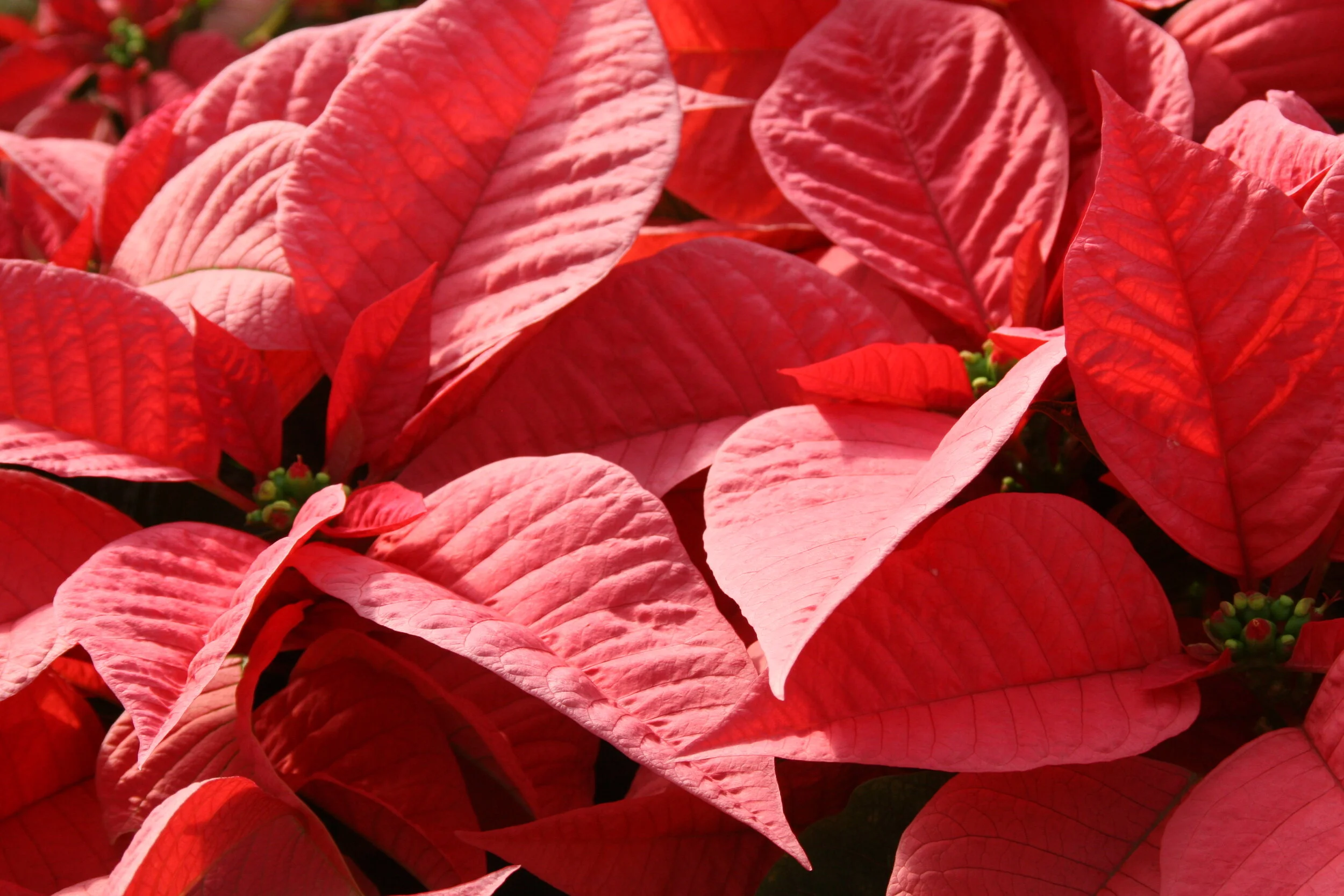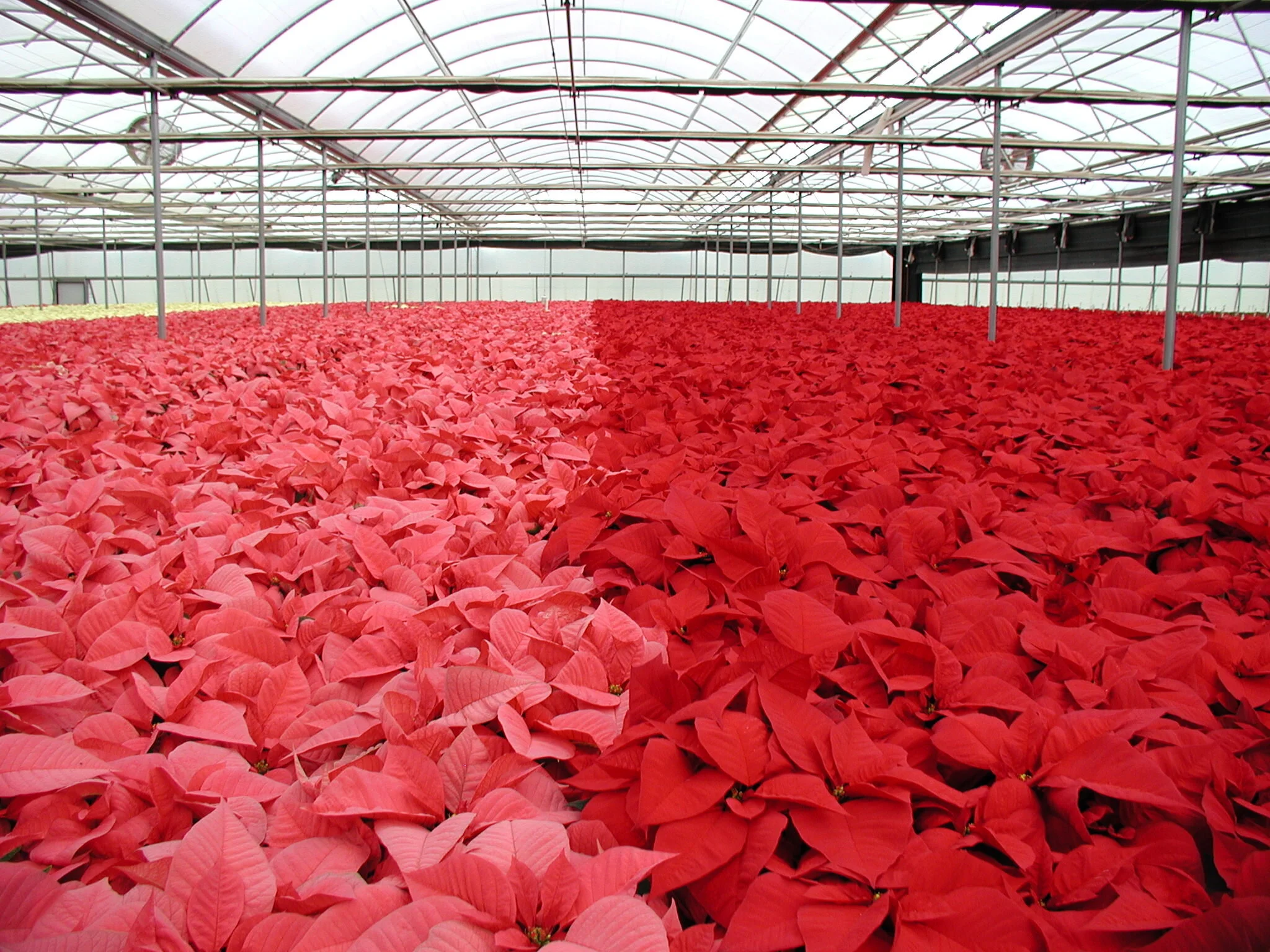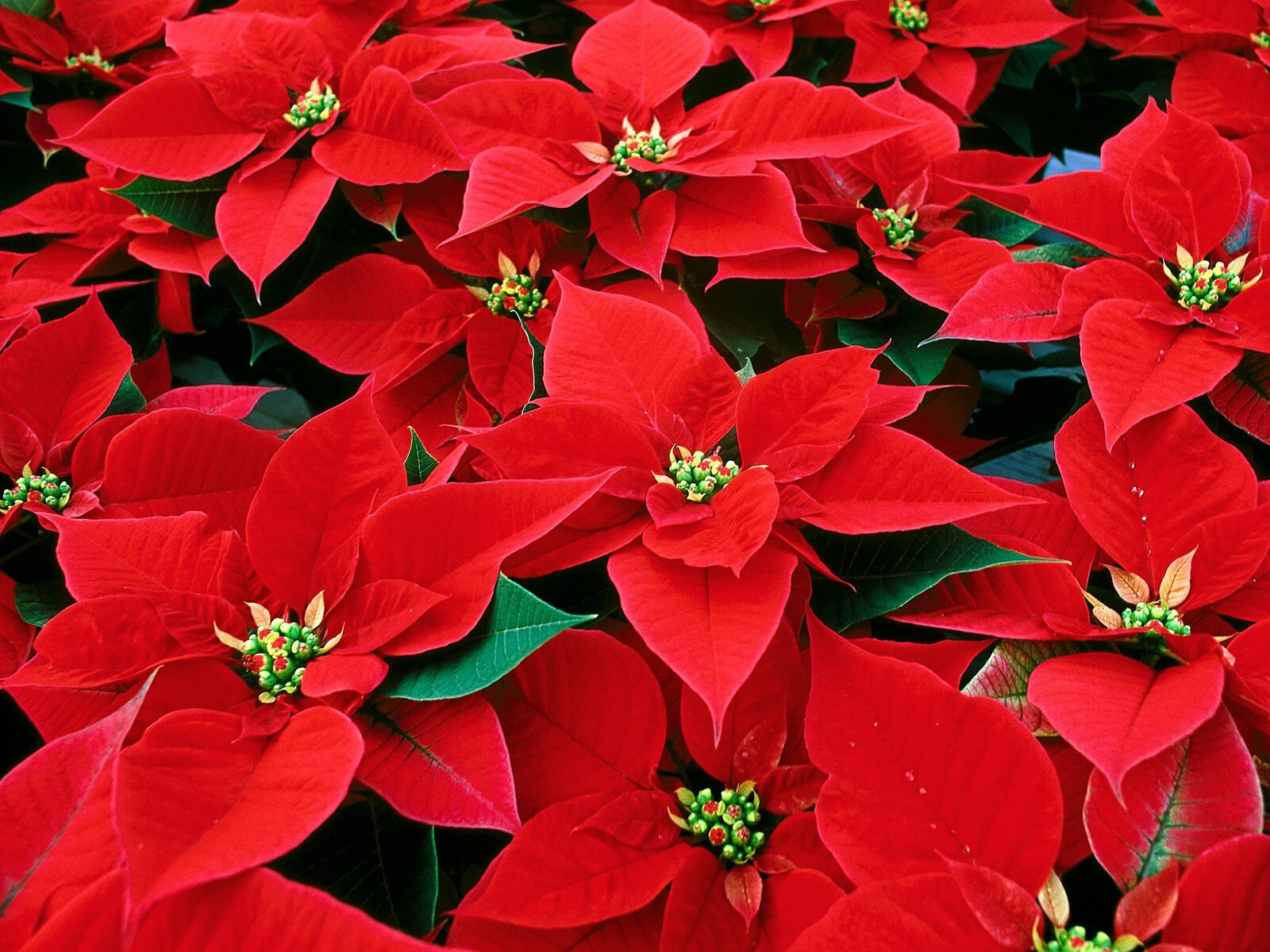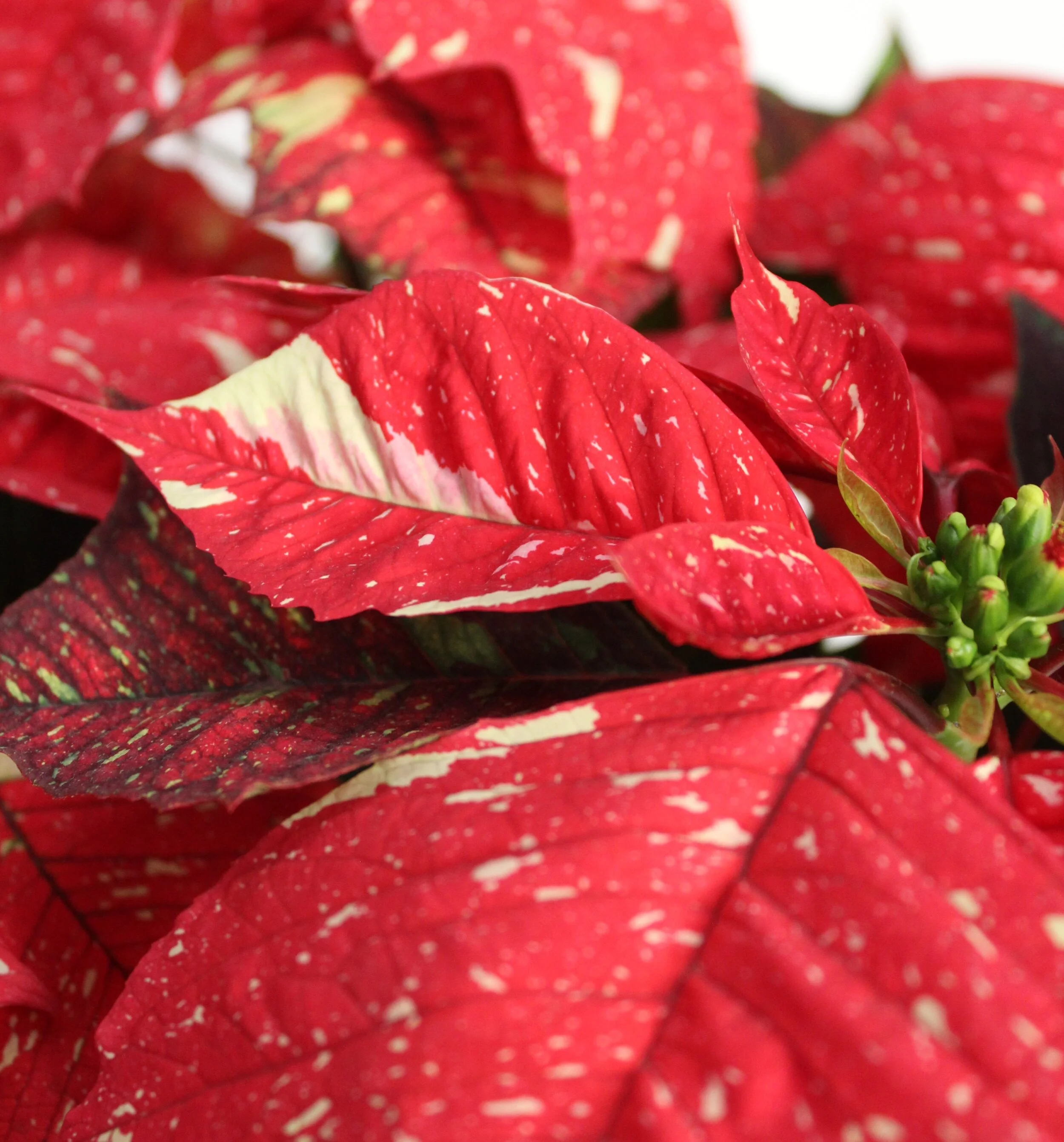Poinsettia
The Flower of
Holiday Cheer
No flower says Christmas like the beauty of the magnificent Poinsettia. They come in many shades, ranging from traditional red, pink, burgundy, and white. Known for their rich colors and velvety leaves, they also come in marbled and speckled varieties. They are very much a holiday staple, brightening the cold winter days and bringing cheery color to the most festive decor.
Poinsettia Care Line Classification
Care Information
Light
Place in bright diffused light, but poinsettias will tolerate low light.
Temperature
Average household temperatures, between 65-70°F daytimes and 60-65°F nights. Avoid excessively hot or cold temperatures.
Water
Prefers moderately moist soil. Water thoroughly when soil feels dry to the touch. Remove wrap or decor before watering. Drain off all excess water. Do not allow plants to stand in water.

The Pilea: Deep Dive
Season
Winter
Care
Poinsettias like light, so place yours near a sunny window for at least six to eight hours a day. They prefer bright, indirect light, though they do fine with partial shade. Don't let any direct rays hit the leaves, as they can burn easily. Water your poinsettia whenever the soil surface feels dry to the touch. Saturate completely until water runs through the drainage holes in the bottom, but do not let the plant sit in water. Best to take off wrap/container and place in a sink before watering to allow it to drain from the bottom of the pot. Once pot has drained, replace to original spot.
Home to Garden
When you start planting poinsettia outdoors, you must find a location with similar attributes to its location indoors. Poinsettia plants must have a sunny corner to call home, somewhere protected from harsh winds, which can damage them quickly. Don’t transplant poinsettia plants outdoors right after Christmas. Once all of the leaves have died back, prune the bushes back to two buds and keep it in a bright location. You can start planting poinsettia outdoors after all chance of frost has passed. Avoid overwatering as this will cause root rot.
Poinsettia plants outdoors tend to grow tall and leggy. Prevent this by regular trimming. Pinching back the tips of new growth creates a bushier plant, but the bracts themselves are smaller.
Flower Meaning
Poinsettias symbolize success and good cheer. They have long been known for their Christmas affiliations. In fact, the plant first became associated with the holiday during the 1500s in Guatemala and Mexico. Legend has it that a girl named Maria was too poor to be able to offer a gift for the holidays. She was told by an angel to gather weeds from the roadside instead. When she placed the weeds by the church altar, crimson blossoms sprouted and later turned into poinsettias. From that point on, Franciscan friars began to use the plant in holiday celebrations. The star pattern of the leaves symbolize the Star of Bethlehem, while the red color symbolizes the sacrifice of the crucifixion.
Fun Facts
Poinsettias received their name in the United States in honor of Joel Roberts Poinsett, who introduced the plant to the country in 1828. Poinsett was a botanist, physician and the first US Ambassador to Mexico. He sent cuttings of the plant from Southern Mexico to his home in Charleston, South Carolina. The word Poinsettia is traditionally capitalized because it is named after a person. In Mexico the Poinsettia is a perennial shrub that grows 10-15 feet tall. The showy, colored parts of the poinsettia, often considered flowers, are actually colored bracts (modified leaves). The yellow flowers, or cyathia, are in the center of the colorful bracts. The Aztecs used the Poinsettia bracts to make a reddish purple dye for fabrics, and used the sap medicinally to control fevers.
